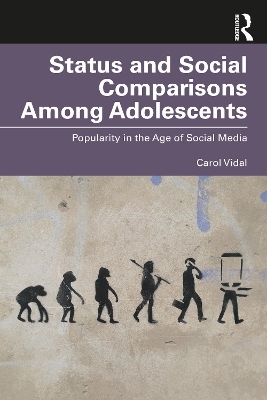
Status and Social Comparisons Among Adolescents
Routledge (Verlag)
978-1-032-88034-1 (ISBN)
Focusing on how social status is ever-present across species in the animal world, the book begins by exploring the biology of social status, the biological mechanisms by which it affects health, and how it presents in the spaces in which children and adolescents live e.g., schools, neighbourhoods, and cultures. Case studies of adolescents interviewed about social status are included, as well as a final chapter detailing specific steps to help minimise the effects of hierarchies on health and ways to approach social status differences.
Bridging anthropological, economic, developmental, and psychological literature on children and adolescent social hierarchies, this book is an invaluable guide for parents, educators, and clinicians such as school counsellors, psychologists, pediatricians, pediatric psychiatrists, and other health care providers to better understand and support youth’s behaviour. This will also be of interest for students studying Adolescent Health and Adolescent Development.
Carol Vidal is a child and adolescent psychiatrist and assistant professor of psychiatry and behavioral sciences at the Department of Psychiatry and Behavioral Sciences at the Johns Hopkins University, School of Medicine. She currently works clinically in a School-based mental health program located in Baltimore City Schools where she evaluates and treats adolescents with behavioral and depressive disorders. Her research interest lies in the intersection between the social environment and addictions, depression and intentional injuries in adolescents.
Preface. 1. Biology of Social Status in The Animal World: From animals to humans. 2. Social Status in Humans’ History. 3. Review of Social Status and Health. 4. Social Status in Adolescents, From the Playground to the Fraternity Party. 5. The Context of Status: Societies, Culture and the Media. 6. Social Status and Mental Health and Our Environments. 7. Common Clinical presentations related to social rank. 8. What Do Teens Have to Say About Status. 9. The psychology of social rank, what do social comparisons do to us?. 10. What to do About It: Examples of Good Use of Status Dynamics.
| Erscheinungsdatum | 04.12.2024 |
|---|---|
| Verlagsort | London |
| Sprache | englisch |
| Maße | 156 x 234 mm |
| Gewicht | 330 g |
| Themenwelt | Geisteswissenschaften ► Psychologie ► Allgemeine Psychologie |
| Geisteswissenschaften ► Psychologie ► Entwicklungspsychologie | |
| Geisteswissenschaften ► Psychologie ► Sozialpsychologie | |
| Medizin / Pharmazie | |
| Sozialwissenschaften ► Soziologie ► Makrosoziologie | |
| ISBN-10 | 1-032-88034-1 / 1032880341 |
| ISBN-13 | 978-1-032-88034-1 / 9781032880341 |
| Zustand | Neuware |
| Informationen gemäß Produktsicherheitsverordnung (GPSR) | |
| Haben Sie eine Frage zum Produkt? |
aus dem Bereich


